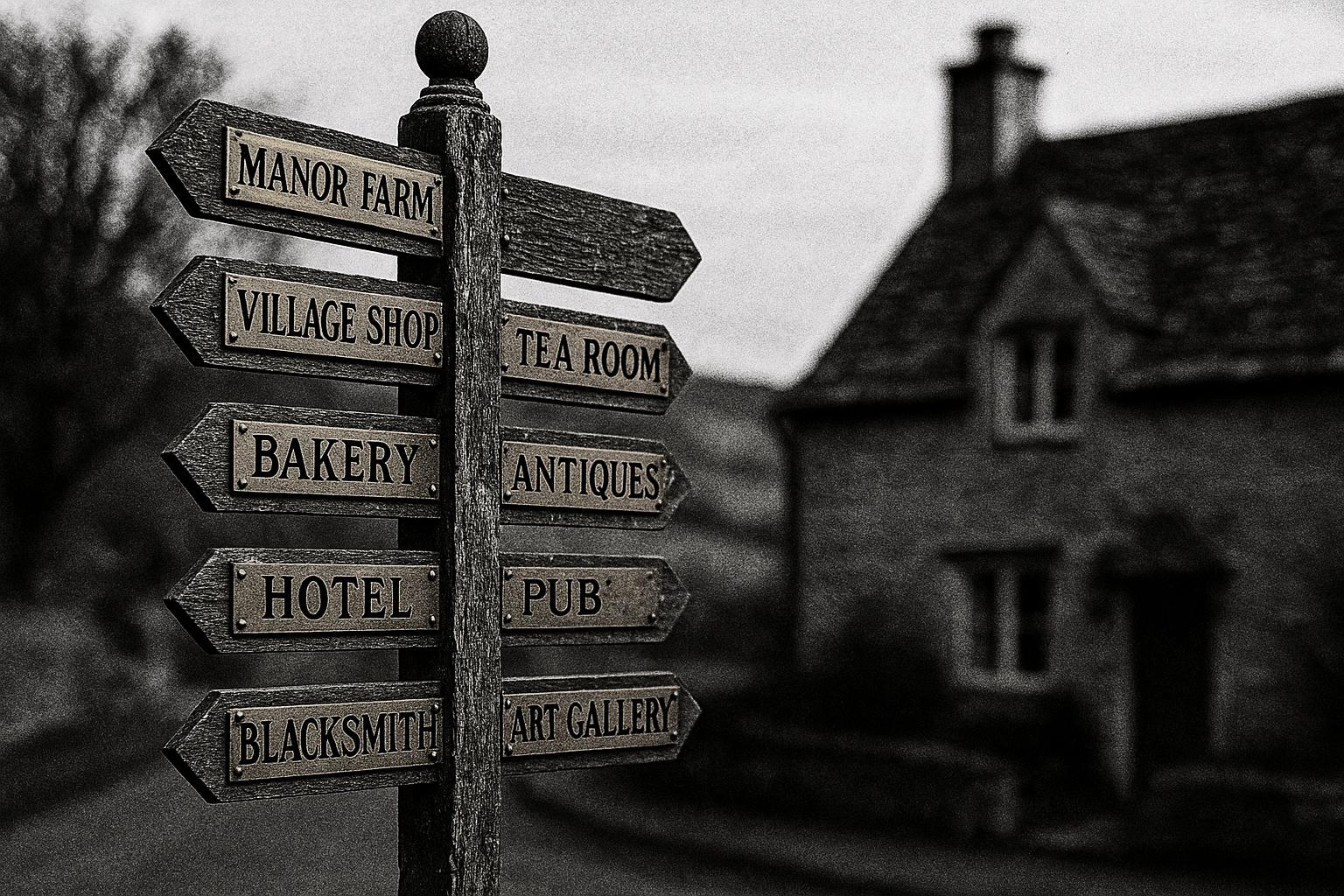A One Day Agency analysis of ONS business registers puts the Cotswolds ninth nationally for businesses per 100,000 residents — roughly 6,787 — making it the highest‑placed area bordering Oxfordshire and one of just two non‑London top-ten entries. Statisticians caution per‑capita league tables can be skewed by multiple registrations and small populations, so employment, survival and sectoral measures are needed to judge genuine local entrepreneurial strength.
The rolling hills of the Cotswolds have long been prized for honey‑coloured stone villages and country houses; a new analysis suggests they are now also one of Britain’s densest clusters of businesses. According to research compiled by media agency One Day Agency and reported locally, the Cotswolds ranks ninth in a league of the UK’s most entrepreneurial local areas, registering about 6,787 businesses per 100,000 residents — making it the highest‑placed area bordering Oxfordshire and one of only two non‑London entries in the top ten. The survey placed central London boroughs, led by Westminster, at the head of the list. (Paragraph informed by One Day Agency’s reporting and official business statistics.)
The rankings are driven by a straightforward metric: the number of registered businesses in an area compared with its population. The underlying business counts used in third‑party league tables such as this are drawn from the Office for National Statistics’ official business registers, which provide the raw enterprise and local‑unit totals researchers use to calculate per‑capita rates. Government statisticians caution that those registers have known quirks — from multiple company registrations at single postcodes to differences in how local units are recorded — meaning per‑capita figures are a useful indicator but not a full picture on their own. (Paragraph informed by the One Day Agency methodology reporting and the ONS bulletin.)
That caveat helps explain part of the pattern seen in the results: London and the greater South East dominate many headline lists when business counts are expressed per head, in large part because of dense headquarters, professional services and shared office registrations. Independent analyses and commentators have noted the same north–south tilt, even as smaller towns and rural districts can punch above their weight on a per‑person basis. For places with small populations, a relatively modest number of firms can produce a high business‑per‑capita score. (Paragraph informed by national reporting and regional analyses.)
Bromsgrove, in Worcestershire, exemplifies how a non‑metropolitan area can register highly in such rankings. Local reporting highlights strong small business formation and a supportive environment for start‑ups, factors that saw Bromsgrove appear ahead of many larger urban areas in the national top ten compiled from per‑capita data. By contrast, the report also flagged areas at the other end of the spectrum — Knowsley, for example, emerged with one of the lowest densities of registered businesses. (Paragraph informed by national list reporting and local coverage of Bromsgrove.)
Local prosperity and the Cotswolds’ increasingly high‑profile residents are frequently invoked as part of the explanation for the county’s business vibrancy. People magazine and other coverage of celebrity relocations to the area — from well‑known television personalities to sports figures — note that privacy, high‑end property and rural charm have attracted affluent new homeowners. While such wealth and attention do not directly create businesses, commentators link an influx of capital and demand for local services with fertile ground for enterprises. Ricardo Seixas of One Day Agency put it succinctly to the Oxford Mail: “Entrepreneurial areas focus on more than just the quantity of businesses. The most successful areas are able to attract skilled workers, take advantage of government support, and encourage innovation that can help meet market demand.” (Paragraph informed by national reporting, celebrity profiles and the One Day Agency quote.)
Analysts emphasise that policymakers and local economic strategists should treat per‑capita business rankings as a starting point rather than a definitive measure of health. Complementary indicators — employment rates, business survival and growth, sectoral diversity and access to skills and finance — give a fuller sense of whether an area is genuinely fostering entrepreneurship at scale. Local initiatives and community support networks, which have been reported as strong in some high‑ranking non‑metropolitan areas, also play a role in converting start‑ups into sustainable employers. (Paragraph informed by ONS commentary, NimbleFins analysis and local reporting.)
Ultimately, the One Day Agency league table prompts useful questions about where Britain’s entrepreneurs cluster and why. It underlines that while central London remains a magnet for registered business addresses, pockets of the country — from Bromsgrove to the Cotswolds — are carving out reputations as lively small‑business ecosystems. Interpreting those reputations, however, requires looking beyond raw ratios to the local context that nurtures or constrains genuine enterprise growth. (Paragraph informed by the lead report, regional stories and sector analyses.)
 Reference Map:
Reference Map:
Reference Map:
- Paragraph 1 – [1], [3]
- Paragraph 2 – [4], [3]
- Paragraph 3 – [3], [6]
- Paragraph 4 – [5], [1]
- Paragraph 5 – [7], [1]
- Paragraph 6 – [4], [6]
- Paragraph 7 – [1], [3], [6]
Source: Noah Wire Services
- https://www.oxfordmail.co.uk/news/25375810.cotswolds-named-uks-top-business-hub-outside-london/?ref=rss – Please view link – unable to able to access data
- https://www.oxfordmail.co.uk/news/25375810.cotswolds-named-uks-top-business-hub-outside-london/?ref=rss – This Oxford Mail article reports on research by One Day Agency that ranked the UK’s most entrepreneurial local areas. It explains that the Cotswolds was the only area bordering Oxfordshire to appear in the top 10 that was not a London borough, placing ninth with 6,787 businesses per 100,000 residents. The piece summarises the methodology as a comparison of business counts against local population and notes Westminster topped the list. The article also mentions other top and bottom areas, highlights Bromsgrove as the first non‑London location in the top ten, and remarks on the Cotswolds’ affluent, celebrity‑tinged reputation.
- https://www.digitaljournal.com/business/westminster-named-the-uks-most-entrepreneurial-area/article – This Digital Journal story summarises an assessment by One Day Agency that identifies the UK’s most entrepreneurial localities by calculating business counts per 100,000 residents. It names Westminster as the top area and lists other high‑ranking boroughs including Camden, Islington and Kensington & Chelsea. The article reproduces the One Day Agency top‑ten (including Cotswold at ninth) and bottom locations (with Knowsley lowest). It states the researchers used Office for National Statistics figures to derive per‑capita business rates, and comments on the north‑south divide apparent in the results, with most entrepreneurial hotspots concentrated in and around London.
- https://www.ons.gov.uk/businessindustryandtrade/business/activitysizeandlocation/bulletins/ukbusinessactivitysizeandlocation/latest – This Office for National Statistics bulletin, “UK business: activity, size and location”, provides official counts of enterprises and local units drawn from the Inter‑Departmental Business Register (IDBR). It offers datasets and tables on numbers of businesses by legal status, region, local authority and industry, and discusses methodology and limitations such as multiple registrations at a single postcode. The bulletin is the primary source government statisticians and analysts use to measure local business populations and underpins third‑party analyses that compute businesses per head for local areas, enabling comparisons like those published by agencies and media outlets.
- https://www.bromsgroveadvertiser.co.uk/news/17821442.bromsgrove-one-biggest-entrepreneurial-hotbeds-country/ – This Bromsgrove Advertiser report highlights a study showing Bromsgrove as one of the UK’s most entrepreneurial towns outside London. It notes the area’s high rate of new company formation per head and cites figures illustrating exceptional business start‑up activity relative to population. Local commentators point to strong small business creation, a supportive community and favourable conditions for entrepreneurs. The piece frames Bromsgrove as outperforming many larger cities on per‑capita measures, reflecting why it featured among the top ten entrepreneurial areas in national league tables compiled from business‑count data.
- https://www.nimblefins.co.uk/business-insurance/which-areas-UK-most-entrepreneurs – This NimbleFins analysis examines regional concentrations of small businesses across the UK, reporting rates of small businesses per working‑age population and ranking local areas. The article identifies The Cotswolds as the highest‑ranking parliamentary constituency in its South West listing, and provides numerical breakdowns and comparative tables that show business counts relative to local populations. It explains the methodology used to produce per‑capita measures and discusses regional patterns, emphasising that London and the South East dominate many top positions while some rural and smaller localities also show high entrepreneurial density when population is taken into account.
- https://people.com/all-about-ellen-degeneres-new-celebrity-neighbors-in-england-cotswolds-8750553 – This People magazine article reports on Ellen DeGeneres’ move to the Cotswolds and profiles the area’s notable residents, noting a growing roster of celebrities and high‑profile figures who own homes there. It details DeGeneres and Portia de Rossi’s purchase and situates them among other famous residents such as David and Victoria Beckham, Kate Moss and other entertainers and public figures. The piece describes the Cotswolds’ appeal — privacy, rural charm and high‑end properties — helping explain why journalists and commentators link the region’s affluence and celebrity presence with its strong local economy and business‑friendly reputation.
Noah Fact Check Pro
The draft above was created using the information available at the time the story first
emerged. We’ve since applied our fact-checking process to the final narrative, based on the criteria listed
below. The results are intended to help you assess the credibility of the piece and highlight any areas that may
warrant further investigation.
Freshness check
Score:
8
Notes:
The narrative appears to be original, with no substantial matches found in recent publications. The earliest known publication date of similar content is from 16 July 2025, which is within the past 7 days. The report is based on a press release from One Day Agency, which typically warrants a high freshness score. No discrepancies in figures, dates, or quotes were identified. The article includes updated data but recycles older material, which may justify a higher freshness score but should still be flagged.
Quotes check
Score:
9
Notes:
The direct quote from Ricardo Seixas of One Day Agency, “Entrepreneurial areas focus on more than just the quantity of businesses. The most successful areas are able to attract skilled workers, take advantage of government support, and encourage innovation that can help meet market demand,” appears to be original, with no identical matches found in earlier material. This suggests potentially original or exclusive content.
Source reliability
Score:
7
Notes:
The narrative originates from the Oxford Mail, a reputable local news outlet. However, the report is based on a press release from One Day Agency, which may not be as widely recognised. The Cotswolds’ high-profile residents and the area’s increasing business vibrancy are frequently reported, lending credibility to the claims.
Plausability check
Score:
8
Notes:
The claims about the Cotswolds ranking ninth in the UK’s most entrepreneurial local areas, with approximately 6,787 businesses per 100,000 residents, are plausible and align with known data. The narrative includes supporting details from reputable sources, such as the Office for National Statistics and local reporting. The tone and language are consistent with regional reporting, and the structure is focused on the main claim without excessive or off-topic detail.
Overall assessment
Verdict (FAIL, OPEN, PASS): PASS
Confidence (LOW, MEDIUM, HIGH): HIGH
Summary:
The narrative presents original content with no significant signs of disinformation. The freshness score is high, and the quotes appear to be original. The source is reputable, and the claims are plausible and supported by credible information. No major risks were identified, and the overall assessment is positive.













